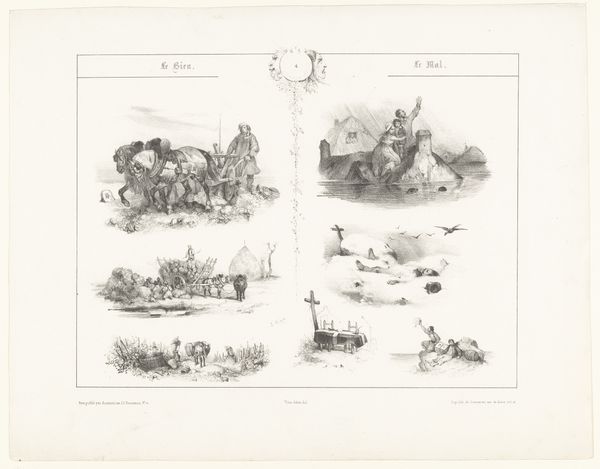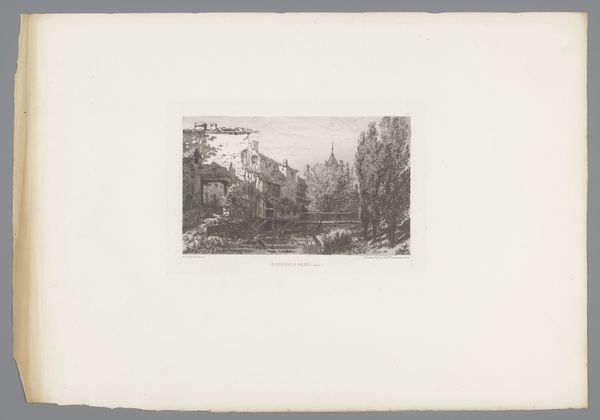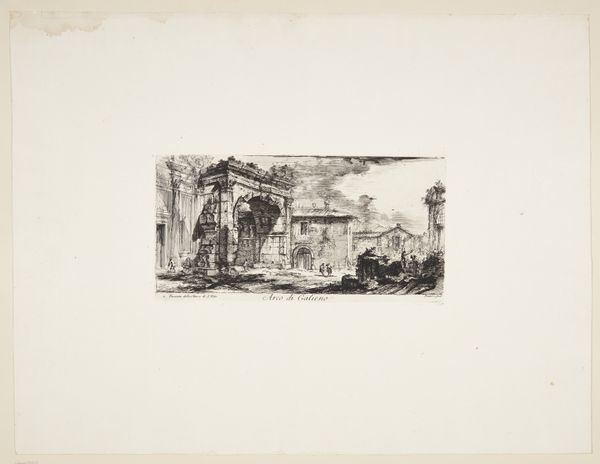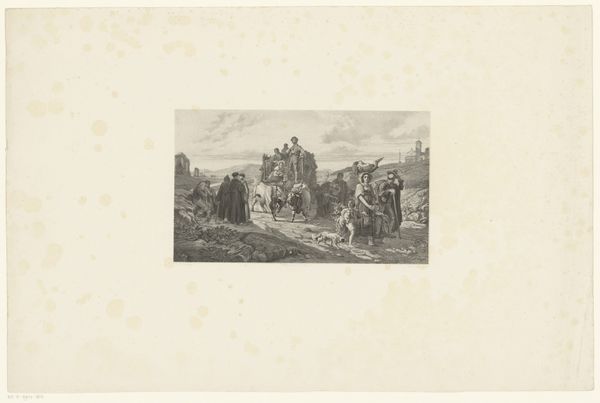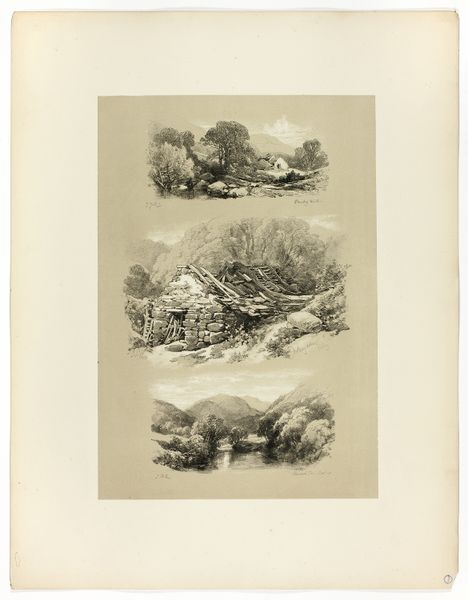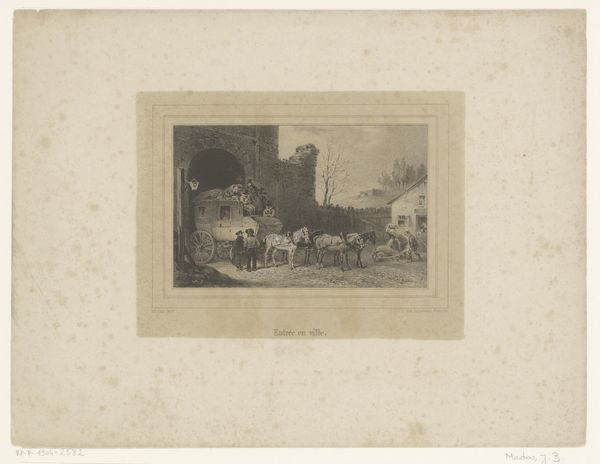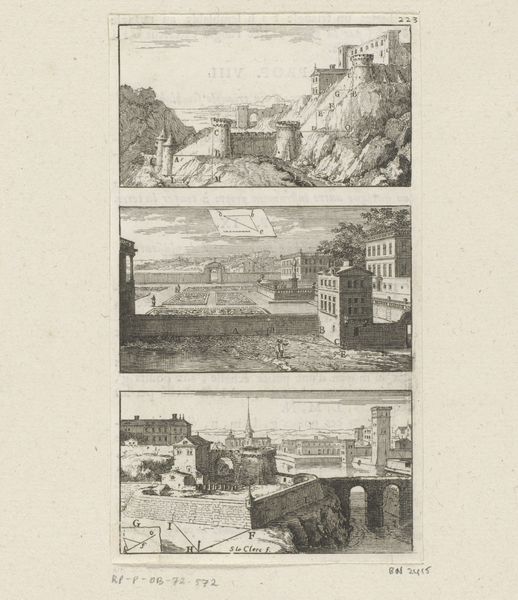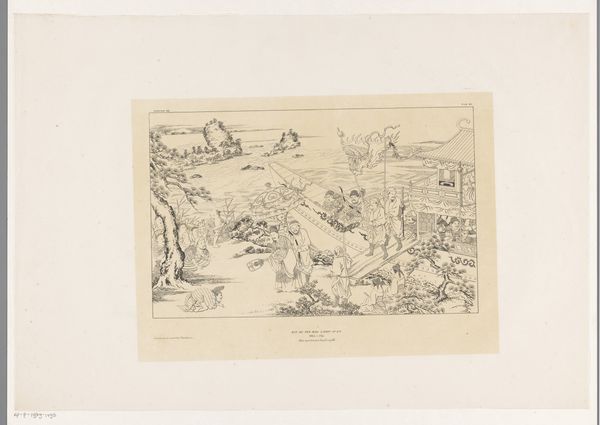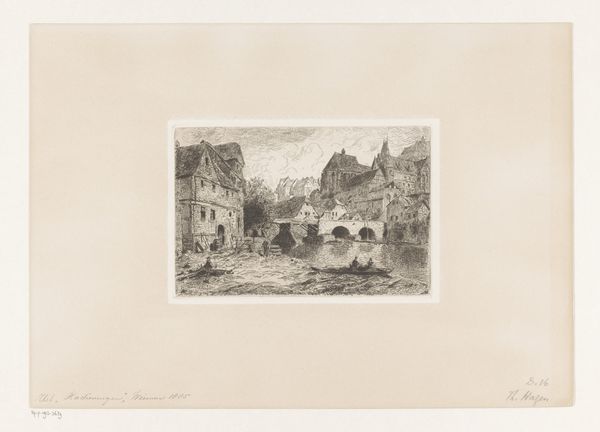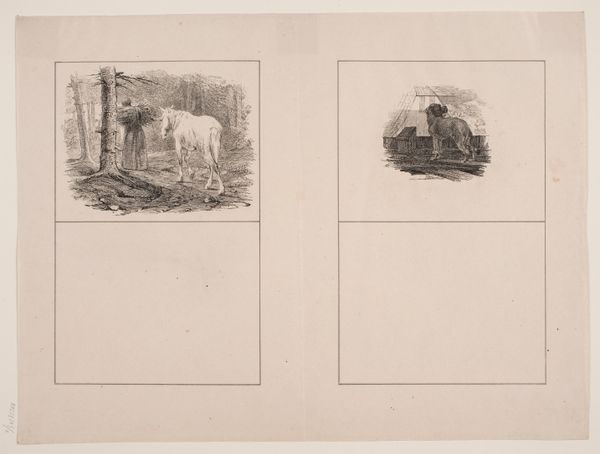
Frejus, Beaucaire, Chateau, from Picturesque Selections 1860
0:00
0:00
Dimensions: 252 × 385 mm (image, primary support); 430 × 560 mm (secondary support)
Copyright: Public Domain
James Duffield Harding created this lithograph, entitled "Frejus, Beaucaire, Chateau, from Picturesque Selections," using ink on paper. Lithography is a printmaking process that relies on the principle that oil and water don't mix. The artist draws an image on a flat stone or metal plate with a greasy crayon, then treats the surface so that ink adheres only to the drawn areas. In Harding’s print, the inherent qualities of lithography lend the images a soft, almost hazy quality. Look closely, and you’ll see the subtle gradations of tone achieved through the careful application of ink. The process allowed for the relatively quick reproduction of images, making picturesque views like these accessible to a wider audience. Consider the social context: the rise of tourism and the desire for images of faraway places fueled the demand for such prints. Lithography, as a form of mass production, democratized art, bringing scenes of castles and quaint villages into the homes of ordinary people. By focusing on the materials, making, and historical context, we can appreciate how this artwork blurs the boundaries between fine art and everyday life.
Comments
No comments
Be the first to comment and join the conversation on the ultimate creative platform.

